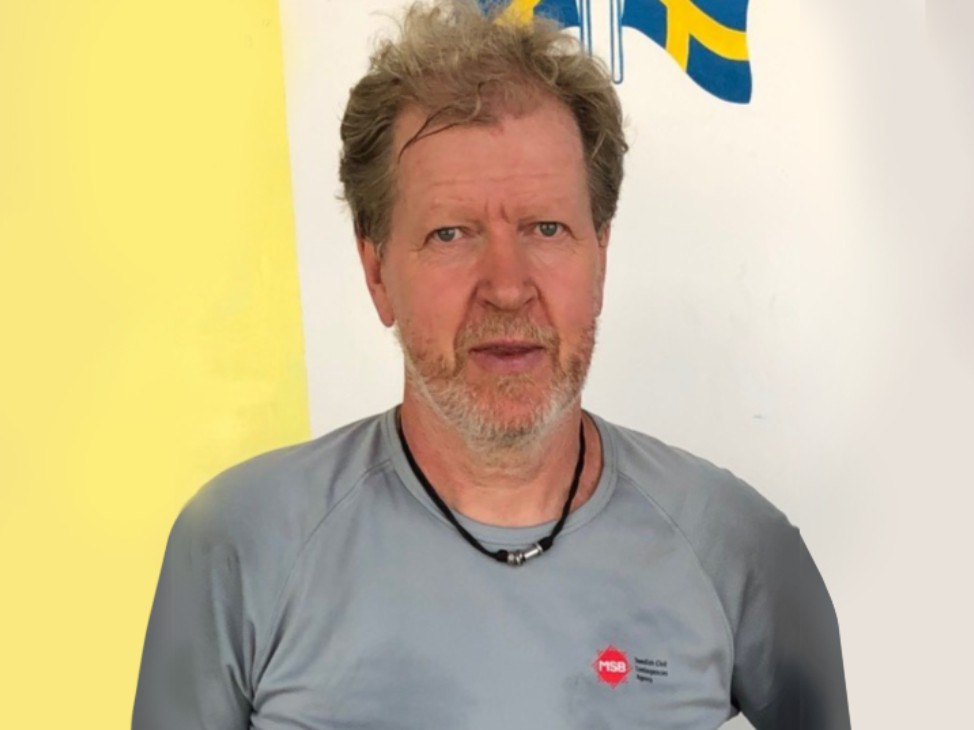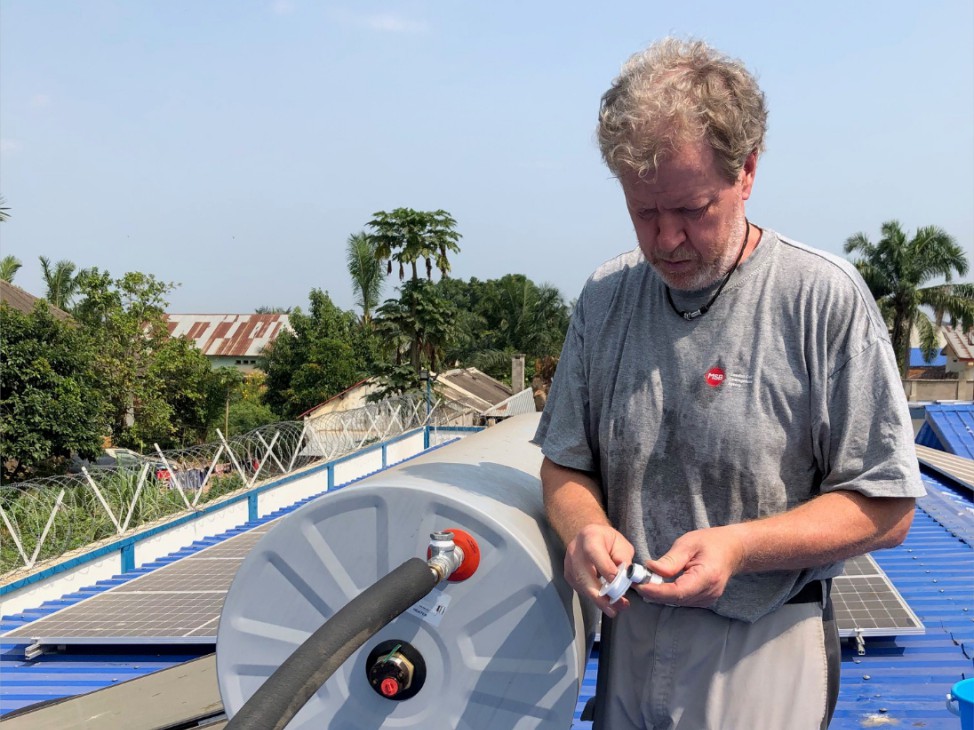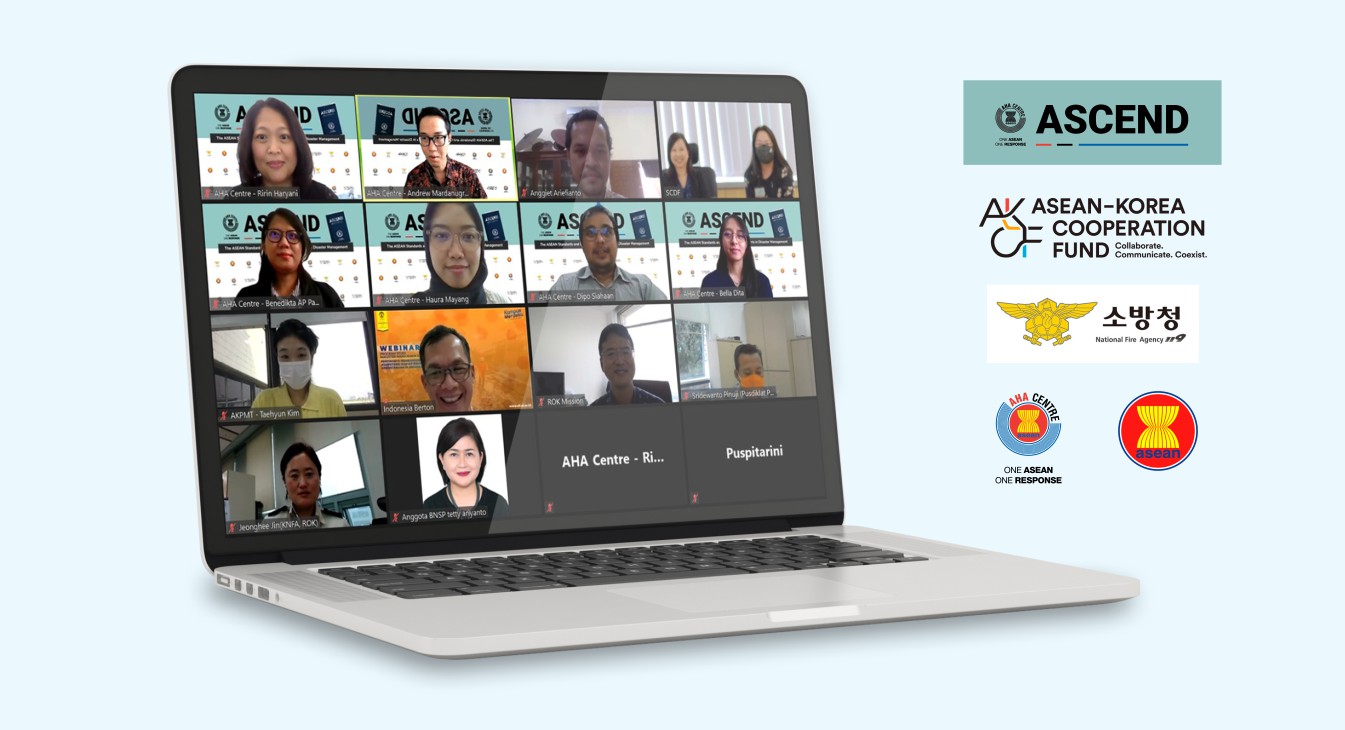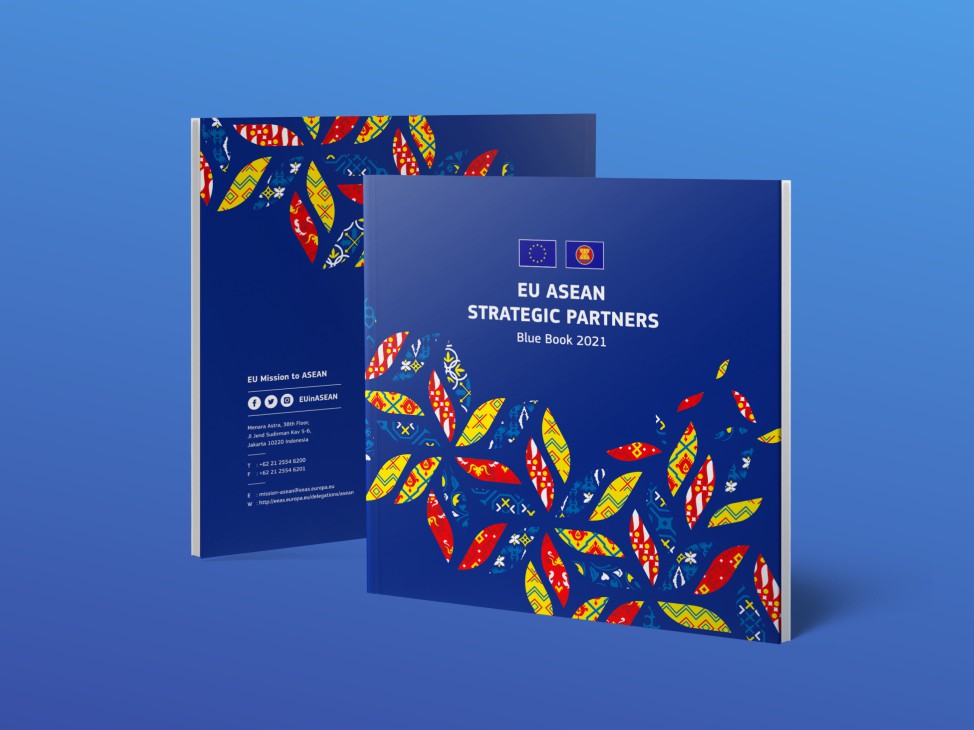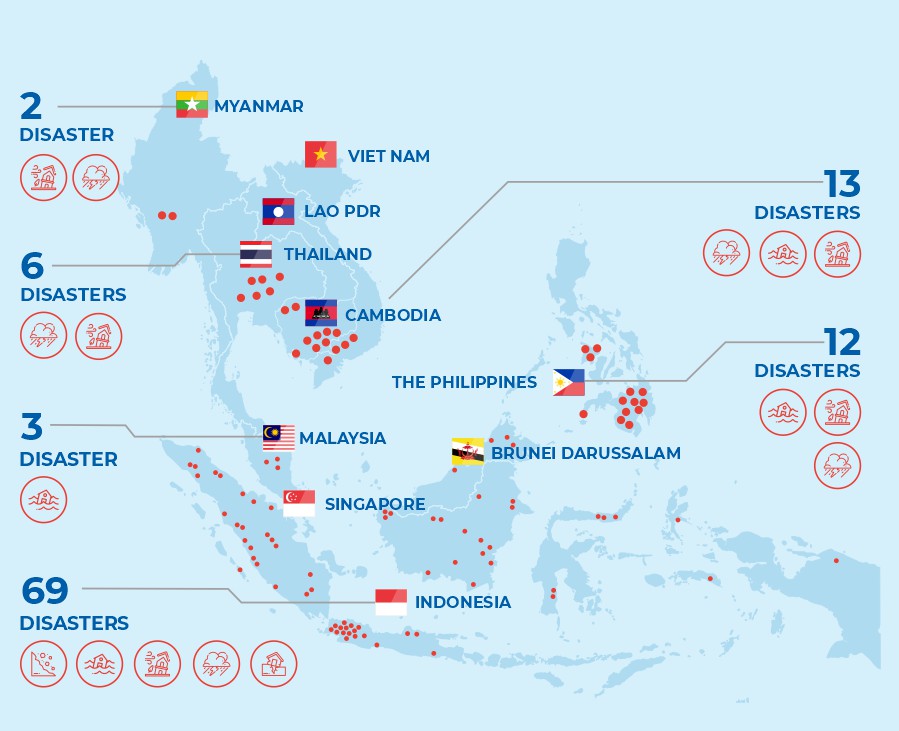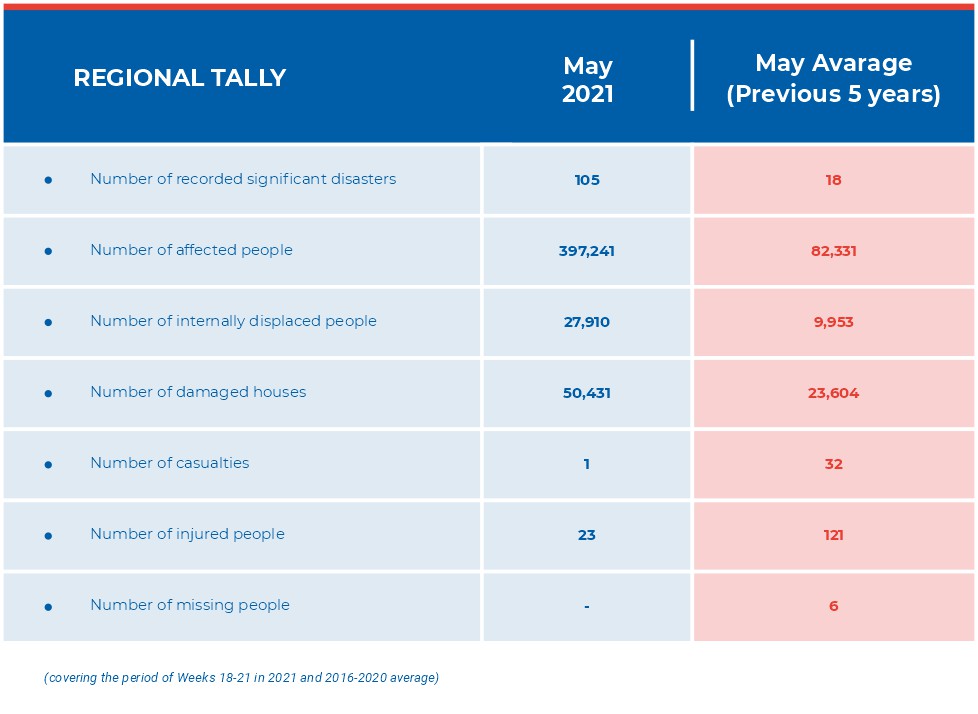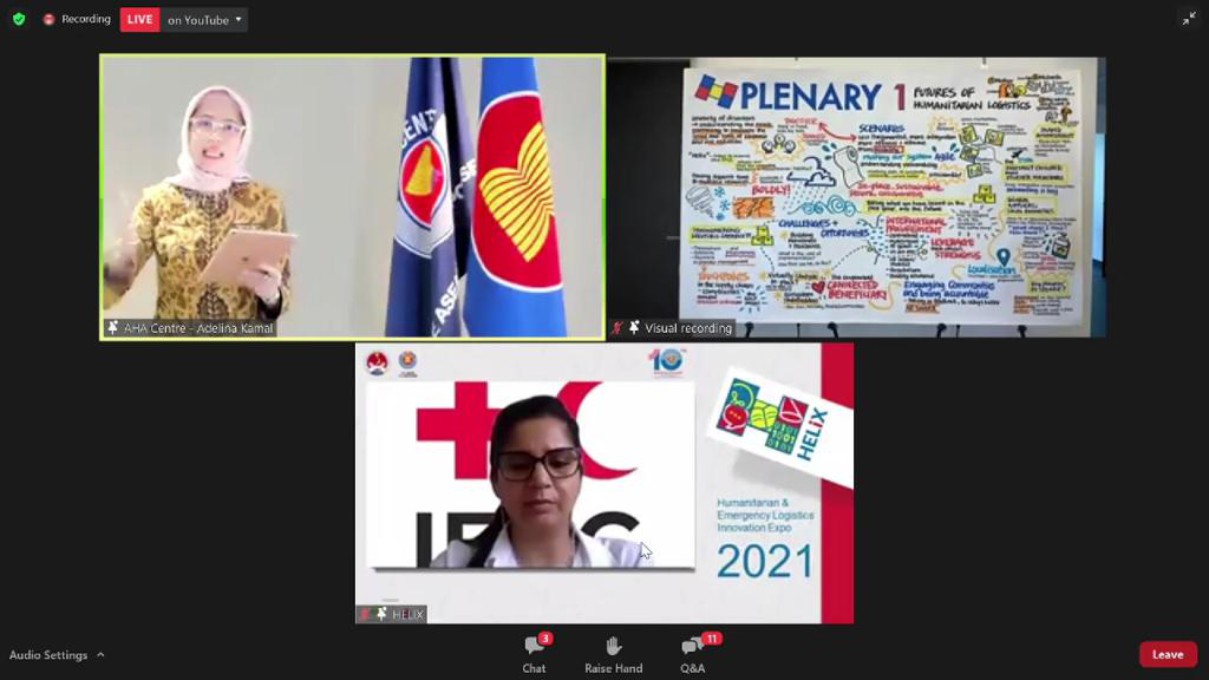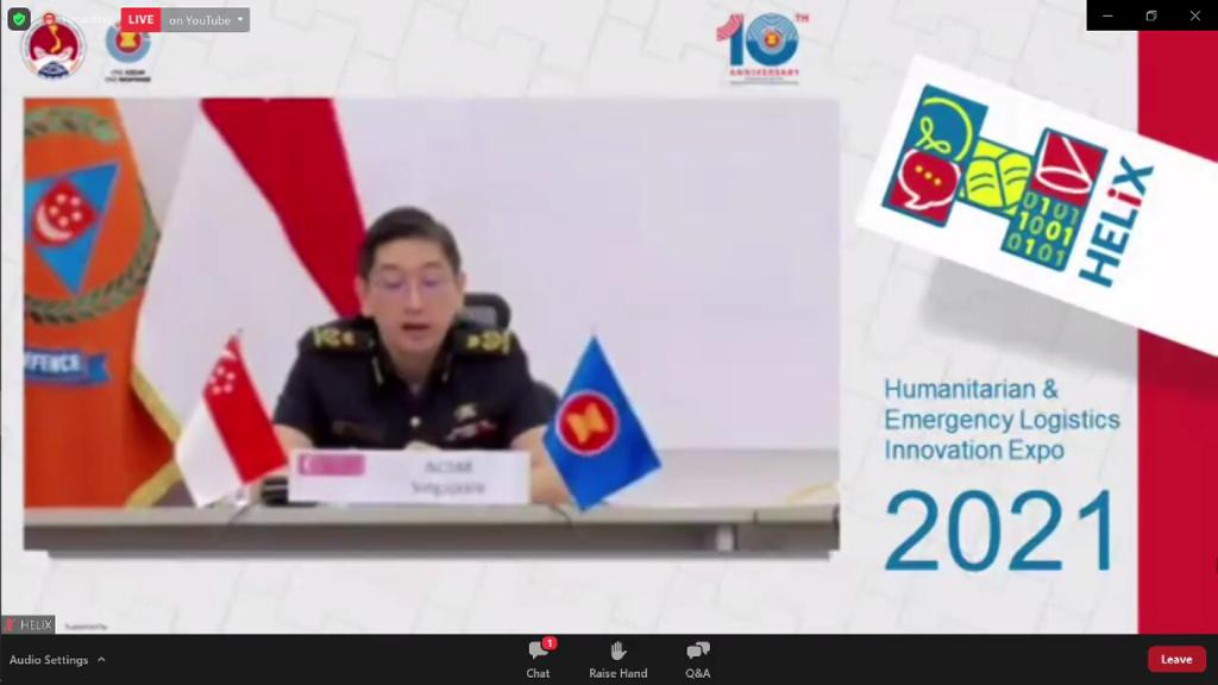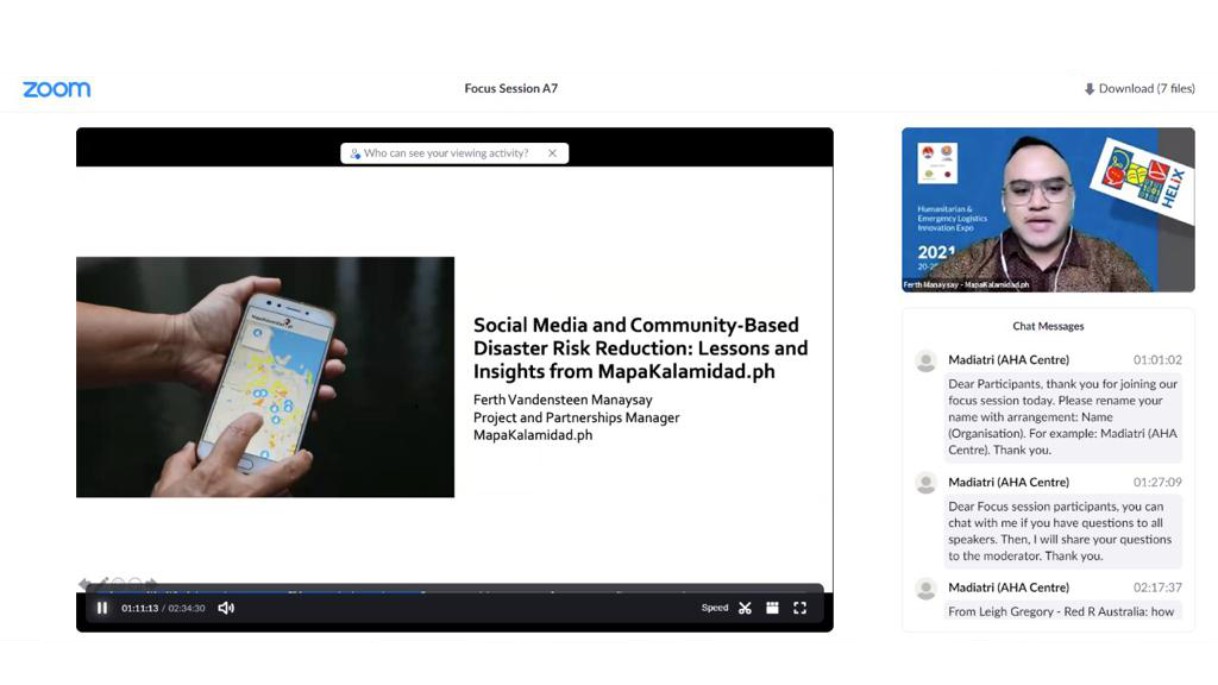Vol 73 – MARTIN SJÖHOLM

MARTIN SJÖHOLM
This month The Column had the opportunity to chat with Mr. Martin Sjöholm, the Training and Exercise Expert of LACER. Martin worked as a paramedic before he joined the Swedish Civil Contingencies Agency (MSB) in 2000 as a medical coordinator. A member of the United Nations Disaster Assessment and Coordination (UNDAC), European Civil Protection Team (EUCPT) and the Red Cross, he has worked as a project manager in the humanitarian sector, being deployed to various disasters and humanitarian projects across the globe.
When asked why he chose to become a training and exercise expert, Mr. Martin explained that for a long time he had been engaged in training and exercises around the world and found it rewarding to see participants grow and understand the way forward. He was particularly drawn to ASEAN having previously worked there. Given the region’s propensity for disasters every year, he was as keen to learn from others as he was to teach about how different disasters should be handled. The LACER team’s enthusiasm also inspired him.
“It is rewarding to work with different partners, such as the AHA Centre and to learn their ways of working. Working as a European Civil Protection Team member around the world, I have knowledge and experience that I can share with the AHA Centre,”
For Martin, trainings and exercises are the key to achieving new ways of working and improving current practices, as participants can learn in a relatively relaxed environment, without the stress of major consequences. The most important component of the LACER project is information management. It is Marin’s belief that if the AHA Centre can be established as the main source of information during a disaster, this will have a beneficial effect in the affected country or region. Today, information travels very fast and it is essential to be on top of things when a disaster strikes and to have the right support in terms of personnel and equipment.
Martin has worked in the field for the last 15 years in disasters, conducting assessments and reporting. As a mentor for the Assessment Mission Training (AMC) in Cyprus every year he learned about how assessments should be performed, and training of the ASEAN Emergency Response and Assessment Team (ASEAN-ERAT) is one of the prioritised sections he would like to work on. The ASEAN Regional Disaster Emergency Response Simulation Exercise (ARDEX) is another priority.
As to what he hopes to achieve from the project, he emphasises mutual support.
“I hope to learn more about how the [countries in the] region support each other and how LACER can support this work to be more effective and precise,”
Implementing material and work from the European Response Coordination Centre (ERCC) into the AHA Centre is also a very important component of the project.
When not at work Martin enjoys relaxing with his wife Marie at their home outside Gothenburg in Sweden, fixing up his house and babysitting his grandchildren. As the Swedish summer approaches, he is particularly looking forward to barbecues with family and friends.
Written by : LACER team, Michael Hillary Hegarty | Photo Credit : LACER project
- Published in The Other Side
Vol 72 – 2ND PROJECT STEERING COMMITTEE (PSC) MEETING OF THE ASCEND

2ND PROJECT STEERING COMMITTEE (PSC) MEETING OF THE ASCEND
On 20 May, 2021 the AHA Centre held the second project steering committee (PSC) meeting of ASCEND. The meeting was presided over by co-chairs Indonesia and Singapore of the ASEAN Committee on Disaster Management (ACDM) Working Group on Global Leadership and attended by the Mission of the Republic Korea (ROK) to ASEAN, the Korean National Fire Agency (KNFA), the ASEAN-ROK Development Cooperation Programme Management Team (AKPMT), the ASEAN Secretariat and the AHA Centre.
During the meeting, the AHA Centre presented the ASCEND project implementation progress report for December 2020 to April 2021. It provided updates on the overall implementation of the ASCEND project and covered three major areas of work, namely the development of documents and systems, the development of communication materials, and continued coordination and expanded collaboration with various stakeholders. Due to limitations brought about by the prolonged COVID-19 pandemic, the ASCEND project management team (PMT) has focused its efforts on conducting studies, developing guidelines and establishing the IT system needed for the certification process. The AHA Centre expects to introduce and pilot use all of the materials and the IT system within workshops and training planned for late this year and early next year. In addition to the aforementioned progress, the ASCEND-PMT of the AHA Centre has also expanded its collaboration to more than 90 individuals from at least 30 institutions or organisations.
The ASCEND-PMT also presented updates on the establishment of the ASCEND Reference Group. The ASCEND Reference Group aims to ensure that the preparation and implementation of the ASCEND project incorporates all recommendations from the ASEAN Member States. On this occasion, the PSC members discussed the possibility of establishing an effective communication flow between the ASCEND-PMT and the Reference Group members.
Lastly, the meeting explored the possibility of conducting an ASCEND benchmarking visit to the Republic of Korea. Given the ongoing COVID-19 situation, it was agreed that the AHA Centre and the KNFA should explore alternatives to conducting the benchmarking visit aside from a physical visit. One of the ideas from the PSC members was to combine a virtual study visit first before considering a physical visit later. The AHA Centre and the KNFA gave an assurance that these options would be considered when developing the concept note. The concept note will also include the risk and benefit analysis of conducting benchmarking visits based on the alternative options available. The co-chairs of the ACDM Working Group Global Leadership closed the meeting by thanking the PSC members for the fruitful and productive discussion during the meeting.
ASCEND is a three-year project grant-funded by the ASEAN-ROK Cooperation Fund (AKCF) to the tune of USD 3.3 million. It aims to enhance the quality of human resources within ASEAN in disaster management through establishing a common set of standard skills and competencies, along with a validation process.
Written by: Haura Mayang | Photo : AHA Centre
- Published in AHA Centre Diary 1
Vol 73 – EU-ASEAN BLUE BOOK 2021

EU-ASEAN BLUE BOOK 2021
In conjunction with the celebration of the 44 years of partnership between the two regions, the European Union (EU) Mission to ASEAN officially launched the EU-ASEAN Blue Book 2021 on Friday, 7 May 2021. The sixth edition of the Blue Book highlights the cooperation between the two regions, including the partnership with the AHA Centre through the Integrated Programme in Enhancing the Capacity of the AHA Centre and ASEAN Emergency Response Mechanisms (EU-SAHA) project.
The EU Ambassador to ASEAN H.E. Mr. Igor Driesmans explained that the book illustrated how the diverse cooperation had a tangible impact on individuals and communities. “The EU and ASEAN became strategic partners based on our shared values of effective multilateralism and rules-based international order. We have come so far as partner regions, having stepped up our relations to strategic economic, political, development and security cooperation,” he said during the virtual launch.
One of the important elements of cooperation highlighted in the book is how to reduce disasters caused by natural hazards. The chapter features the EU-SAHA project, which was officially launched in January 2020. The EU provided support worth EUR 8 million aimed at strengthening the capacity of the AHA Centre, to achieve operational excellence in disaster monitoring and emergency response. This project is implemented through a combination of a direct grant to the AHA Centre, as well as capacity building by EU Member States’ civil protection agencies through the LACER project.
Executive Director of the AHA Centre, Ms Adelina Kamal, quoted in the book chapter, stressed that the project would also benefit the ASEAN Member States through its support for a number of capacity-building activities, workshops and other events. “The support from the European Union through this project is crucial for the AHA Centre to ensure its continuing development. It allows the Centre to develop its internal mechanism and expand at the same time,” she said.
The book also highlighted a success story from the LACER project as part of the EU-SAHA programme. Implemented by the Swedish Civil Contingencies Agency (MSB) and the Estonia Rescue Board (ERB), LACER provides capacity-building support to the AHA Centre through a series of knowledge-sharing activities. The first phase of the project is designed to lay the foundations of the project’s work with the AHA Centre.
“It’s important to build our relationship with the AHA Centre on trust, and despite the pandemic we have managed to do just that.”
Mr. Carl Johan Breitholtz, LACER project manager, concluded.
Written by : Moch Syifa
- Published in Partnership
Vol 73 – ESTONIAN RESCUE BOARD (ERB) – THE TURBULENT YEAR OF 2020

ESTONIAN RESCUE BOARD (ERB)
THE TURBULENT YEAR OF 2020
Although the Estonian Rescue Board (ERB) has not been the lead body during the COVID-19 pandemic, it nevertheless has played an important role in the crisis. On 12 March, 2020 the government of Estonia declared an emergency situation for the whole territory of Estonia. For those of us in the ERB this meant that we had to switch from our regular working regime to a staff regime in which we reduced drastically the services that we provide (e.g. prevention, fire supervision etc).
The main task for us was to secure business continuity in our field, meaning responding to incidents and supporting the local government authorities across the country in coping with the crisis and coordinating the information exchange between different local and state authorities. This may sound like a simple task but it was not, because as in any crisis, being on top of the information flow is one of the greatest challenges. The main reason why the ERB was given that task was due to its expertise in the crisis-coordination field. Although the emergency situation ended on 1 May 2020, our role of being the main crisis partner for local authorities and our continuous support for the Estonian Health Board in resolving the crisis is still ongoing. Another important role was to deliver face masks and disinfectant all over the country. The ERB has a good network of professional and voluntary fire stations throughout Estonia, and that was the main reason it was used to reach as wide a range of people as possible. In addition we helped the police and border guard board with our drones to prevent mass gatherings and transmission of the virus.
As mentioned above, one of the tasks for the ERB was the maintenance of business continuity. In order to achieve that, we worked out different solutions for our first responders. As we were in a pandemic that mainly spread through contact, it was important to work out how to reduce such contact. We tried to maintain every fire station as a bubble, and within each fire station every shift also. So, the changing of shifts in stations was made contactless. We tried to avoid moving firefighters between stations as we did previously in order to maintain a lifesaving number of personnel in a station. All in all, this was more costly initially, but kept the spread of the virus under control and we had no case of an entire fire station being closed for more than 24 hours/one shift as a result of having a shift in quarantine for being in contact with a COVID-positive individual. Of course, all of this was done hand-in-hand with the conventional measures of using face masks, disinfectants etc.
Estonia has a relatively small population and low population density and this in combination with a reasonably good COVID-19 testing system meant that test results were available in less than 24 hours, sometimes even 12 hours, and we could respond to the positive test result quickly and isolate any close contacts. First responders received video instruction on how to use protective equipment and how to safely dispose of it when attending incidents such as car accidents.
Estonia has a quite low natural-hazards risk, limited mostly to occasional flooding and forest fires. The year 2020 was record-breaking for the ERB in a positive sense in many ways: the number of building, dwelling, forest and landscape fires was the lowest since Estonia regained its independence. The number of casualties in fires was also the lowest since 1991. No major forest fires were reported last year in Estonia. There were not even any European Civil Protection Mechanism activations on forest fires within the whole of Europe last year.
As Estonia was the scene of fierce fighting during the Second World War, one of our challenges each year is the recovery of war relics such as unexploded ordnance. In 2020, a record-breaking 9,041 explosive devices were defused. The main reason for this is probably that the winter and spring of 2020 were warm and more people spent time in nature because of COVID-19 restrictions and many discoveries were made by people by walking in the forests.
In 2020 the work of the ERB was greatly transformed by COVID-19. Cooperation with partners from different countries also suffered due to the pandemic. Many trips and meetings were postponed and several had to be cancelled. Luckily, several employees could still participate in international cooperation events to develop partnerships, learn something new and help people in need. At the end of the year, Sudan suffered from a refugee crisis, when thousands of refugees arrived daily from Ethiopia fleeing a military conflict there. The United Nations High Commissioner for Refugees (UNHCR) asked the International Humanitarian Partnership (IHP) network for support in creating housing and working conditions for the people involved in solving the crisis. Estonia contributed with a base camp technician during the period of 19 December 2020 to 23 January 2021. The challenges included travel restrictions and spending a compulsory 14 days in isolation in Khartoum, before advancing to relief operations. All in all it took more time with the restrictions, but that is the new reality!
Written by : Toomas Kääparin / Photo Credit: ERB
- Published in Insight
Vol 73 – MONTHLY DISASTER REVIEW AND OUTLOOK

MONTHLY DISASTER REVIEW AND OUTLOOK
MAY 2021 | DISASTER MONITORING & ANALYSIS
(DMA) UNIT, AHA CENTRE
GENERAL REVIEW OF MAY 2021
For the month of May 2021, a total of 105 disasters were reported. The ASEAN Member States that were affected were Cambodia, Indonesia, Malaysia, Myanmar, the Philippines, and Thailand. A majority of the disasters (64.76%) occurred in Indonesia, which also saw 69.5% of the total number of affected people for the month (Cambodia – 2.1%, Malaysia – 0.7%, Myanmar – <0.1%, Philippines – 26.1%, Thailand – 1.5%). May 2021 saw disasters affecting 60 per 100,000 people* and displacing 4 per 100,000 people* in the region. May 2021 also accounted for roughly one-fifth (20.5%) of the total disasters reported so far in the current year.
The majority of the disasters that occurred in May 2021 were floods (58%) and this is consistent with May of the previous year and May on a five-year average (2016-2020). Flood victims comprised a little over three-quarters (77%) of the total number of affected people. The reported disasters in the region for May 2021 in comparison with the historical data (average for May 2016-2020) indicates that there were 5.5 time more reported disasters; almost 5 times more people affected; almost 3 times more people displaced; twice as many houses affected to some extent; 32 times fewer lives lost; 5 times fewer people suffering injuries; and lastly, 100 times fewer people missing.
Geophysically, 28 significant earthquakes (Magnitude ≥ 5.0) were reported by Indonesia’s Badan Meteorologi, Klimatologi dan Geofisika (BMKG) and the Philippine Institute for Volcanology and Seismology (PHIVOLCS). A Magnitude 6.2 earthquake (later downgraded to M5.9) that occurred 57 km southeast of Blitar in East Java in week 20 caused injuries to two individuals, affected 6,200 persons, and caused damage to thousands of houses, and hundreds of public facilities. Volcanoes in Indonesia and the Philippines have shown recent activity but they have not resulted in significant events and are continuously being monitored.
*Computed based on 2020 population data from worldometers.com
ANALYSIS
According to the ASEAN Specialised Meteorological Centre (ASMC), during May 2021, the largest positive anomalies (wetter conditions) were detected in southern Philippines due to Tropical Depression 03W (local name: Crising). Despite below-average rainfall over the southern Maritime Continent, over half of all recorded disasters that were apparently hydrological in nature (flooding and severe local storms) were reported across Indonesia. A mixture of below and above-average rainfall was observed in Mainland Southeast Asia.
SPOTLIGHT
Over the tropical Pacific Ocean, La Niña conditions declined and returned to El Niño Southern Oscillation (ENSO)-neutral conditions by the beginning of June. The sea surface temperatures in the central and eastern Pacific Ocean continued to warm, with atmospheric indicators (cloudiness and wind anomalies) remaining consistent with the ENSO-neutral conditions. ENSO-neutral conditions are neither El Niño (warming of ocean surface, reduced rainfall in Indonesia) nor La Niña (cooling of ocean surface, increased rainfall in Indonesia), which are the extreme phases of the ENSO cycle.
SEASONAL OUTLOOK
According to the ASEAN Specialised Meteorological Centre (ASMC), through May 2021, the monsoon rain band continued to move northwards over the northern ASEAN region. Concurrently, the prevailing winds over most of the southern ASEAN region strengthened to blow mainly from the southeast or southwest, in line with the transition to Southwest Monsoon conditions. With a strengthening of the prevailing winds, Southwest Monsoon conditions are expected to become fully established in June 2021. The Southwest Monsoon season is likely to extend through the June–August period and is the traditional dry season for the southern ASEAN region, characterised by persistent dry conditions over the region. For the northern ASEAN region, the Southwest Monsoon season is the traditional rainy season.
For the June to August 2021 period, models predict a small increase in chance of above-normal rainfall over parts of the southwestern Maritime Continent. Elsewhere, there is no consistent prediction for the rainfall outlook between the models consulted for much of the region. The La Niña event is nearing its end and most ENSO indicators are generally consistent with ENSO-neutral conditions. For July and August, ENSO-neutral conditions are forecast.
Warmer-than-usual temperatures are expected for much of the ASEAN region, with higher confidence over the Maritime Continent.
As the southern ASEAN region enters the traditional dry season, increased hotspot activities and the development of smoke plumes are likely in fire-prone parts of the region. In the coming months, it is expected that the hotspot and smoke haze situation may deteriorate in parts of the southern ASEAN region that experience prolonged dry conditions.
Sources: ASEAN Disaster Information Network (ADINet), ASEAN Specialised Meteorological Centre (ASMC), ASEAN Disaster Monitoring and Response System (DMRS), Cambodia National Committee on Disaster Management (NCDM), Badan Nasional Penanggulangan Bencana (BNPB), Malaysia Agensi Pengurusan Bencana Negara (NADMA), Myanmar Department of Disaster Management (DDM), National Disaster Risk Reduction and Management Council (NDRRMC), Thailand Department of Disaster Prevention and Mitigation (DDPM), Viet Nam Disaster Management Authority (VNDMA), Badan Meteorologi, Klimatologi dan Geofisika (BMKG), Pusat Vulkanologi dan Mitigasi Bencana Geologi (PVMBG), Philippine Institute for Volcanology and Seismology (PHIVOLCS)
Written by : Keith Paolo Landicho, Sadhu Zukhruf Janottama, Lawrence Anthony Dimailig
DISCLAIMER
The AHA Centre’s estimation is based on data and information shared by National Disaster Management Organisations (NDMOs) and other relevant agencies from ASEAN Member States, international organisations, and news agencies. Further information on each recorded significant disaster, description, and detail of data and information are available at: http://adinet.ahacentre.org/reports.
- Published in Monthly Disaster Outlook
Vol 73 – HELiX 2021 SOLUTIONS TO ADDRESS GAPS IN LOGISTICS CAPACITIES

HELiX 2021
SOLUTIONS TO ADDRESS GAPS IN LOGISTICS CAPACITIES
It is heartening and exciting that even with the pandemic complicating travel and communications everywhere, the spirit of cooperation and eagerness for learning and exchange remains undimmed worldwide. In this spirit and with the aim of capturing new and emerging innovations in the field of humanitarian logistics, provoking insights and constructive discussions, as well as being a convergence between innovators and potential users, the first Humanitarian Emergency Logistics and Innovation Expo (HELiX) was held virtually from 24 to 25 May 2021.
The event was successfully organised by the AHA Centre in cooperation with the Viet Nam Disaster Management Authority (VNDMA). HELiX, the first such event held by the AHA Centre, is a testament to the flexibility and resilience of the AHA Centre and VNDMA staff who worked diligently to prepare the expo, especially as the pandemic necessitated its adaptation into an online setting. HELiX is also aimed at capturing new and emerging innovations in the field of humanitarian logistics, provoking insights and constructive discussions as well as to be a convergence between innovators and potential users. Furthermore, HELiX was a welcome step, in the AHA Centre’s 10th anniversary year, in its journey towards becoming the premier regional disaster response authority in the region.
Executive Director of the Logistics Institute Asia-Pacific Dr. Robert de Souza, concluded his opening keynote speech on the Futures of Humanitarian Logistics by wishing HELiX success, noting that “[HELiX] brings all of us together to solve the problems that need to be solved, and to focus upon supply chain management, which was understated before, but is now brought to the fore.”
Supporting the points made in the earlier keynote speech, Executive Director of the AHA Centre Ms. Adelina Kamal emphasised during her introduction to the event the importance of a true desire to solve problems and to fulfill needs in driving innovation in order to achieve fit-for-purpose and sustainability. The context of the ASEAN region as a disaster-prone area should drive the region forward as leaders and pioneers in humanitarian innovation. “Therefore, let’s use HELIX sessions as the platform for convergence of innovative minds and ideas, that transcend and transform the way we do things in humanitarian logistics,” said Ms. Adelina.
Moreover, knowledge, engagement and collaboration are essential in actualising and executing the innovative ideas. In this regard, HELIX supported by Temasek Foundation, the UPS Foundation and Angel Investment Network Indonesia (ANGIN) successfully united almost 100 diverse speakers from humanitarian logistics actors and institutions, who ranged from academia and NDMOs to government and intergovernmental organisations, as well as from the private sector. They delivered 21 focus session talks and two keynote speeches in the plenary sessions. Some 21 companies and institutions took part in the virtual international exhibition along with almost 1,000 attendees in total from around the world.
What sort of innovations and ideas were in play? HELiX covered a wide array of topics and issues in the entirety of the humanitarian logistics field. There were innovations within the classic issue of capacity building, with solutions and experiences presented by the IFRC, ICRC and HELP Logistics. Gender and inclusion, an important aspect of humanitarian logistics, was emphasised in the session hosted by UN Women and UNFPA. Similarly, customs procedures in the context of delivering humanitarian aid were also discussed by the IMPACCT Working Group and the Humanitarian Logistics Association. There were also insights on new emerging technology related to data science, mapping and crowd-sourced apps in the sessions by Yayasan PetaBencana and the Humanitarian OpenStreetMap Team, and the exhibits by UN Pulse Labs Jakarta and the Thai Red Cross. Youth involvement and participation was the focus in a session hosted by the Philippine National Youth Commission and the ASEAN Senior Officials Meeting on Youth.
The important participation of new emerging innovators and technology could also be seen in one of the most interesting events in HELiX: the iPitch competition, where teams of innovators pitched their innovative projects to win prizes and advisory by experts. Winners of this competition were the Fleet for Emergency integrated platform by FleetHelp from Indonesia, the THINKLog supply chain management game by the TLIAP-GO team from NUS and the Padayon donation-matching app by the Asian Institute of Management from the Philippines.
Looking ahead, important lessons can be drawn from the success of HELiX. Moreover, HELiX could not have been successful without the participation and support of the partners of the AHA Centre, thus making clear the importance of cooperation, engagement and effective communication among humanitarian actors, academia, experts, etc.
In the near future HELiX will be followed by the AHAckathon hacking competition in October – a hacking competition aimed at students looking to contribute innovative ideas through programming and app creation. Stay tuned for further updates on this upcoming part of HELiX.
Written by : Yohanes Paulus, DELSA Intern | Photo Credit: AHA Centre
- Published in Highlight

